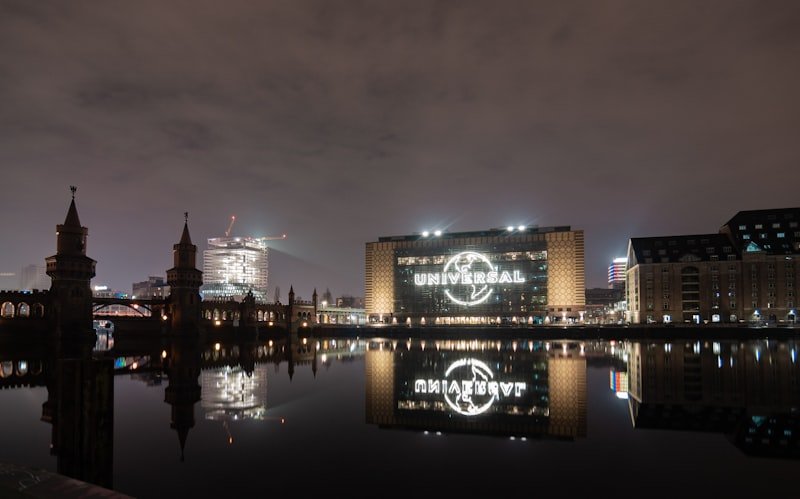
First off, start with two images that tell a story together. Think of it like mixing your favorite colors on a palette; you want them to complement each other. A portrait paired with a landscape or a city skyline can create a striking contrast. Once you’ve chosen your images, open them in Photoshop.

Now, here’s where the fun begins! Use the “Layer” feature to stack your images. The top layer should be the one you want to highlight—usually the portrait. Then, change the blending mode to “Screen.” This nifty trick allows the lighter parts of the top image to shine through, creating that dreamy effect.
But wait, there’s more! To refine your masterpiece, use a layer mask. This is like having a magic eraser; you can paint over areas you want to hide or reveal. Grab a soft brush and gently erase parts of the top image to let the background peek through. It’s all about balance—too much of one image can overshadow the other.
Don’t forget to play with colors! Adjust the hue and saturation to give your double exposure a unique vibe. Think of it as seasoning your dish; a little tweak can elevate the entire flavor.
Finally, add some finishing touches like contrast and sharpness. This is where your image goes from good to jaw-dropping. With a bit of practice, you’ll be creating double exposure effects that leave everyone in awe. So, are you ready to unleash your creativity?
Unlock Your Creativity: Mastering Double Exposure Effects in Photoshop
First off, let’s talk about the basics. Double exposure is all about layering images. Think of it as a sandwich; you’ve got your bread (the base image) and then you pile on the fillings (the second image). The trick is to choose images that complement each other. For instance, a portrait of a person combined with a landscape can evoke emotions that resonate with viewers. It’s like giving your photos a voice!
Now, how do you actually create this effect? Start by opening your base image in Photoshop. Then, drag your second image on top. Here’s where the magic happens: use blending modes! Experiment with options like “Screen” or “Overlay” to see how they interact. It’s like playing with light and shadow—sometimes, the unexpected combinations yield the most stunning results.
Don’t forget about masks! They’re your best friend when it comes to refining your double exposure. With a soft brush, you can gently reveal or hide parts of your images, creating a seamless blend. It’s like sculpting with light; you’re shaping the final piece to tell your unique story.
So, are you ready to unleash your inner artist? Grab your favorite images, fire up Photoshop, and let your imagination run wild. The world of double exposure awaits, and trust me, it’s a journey worth taking!
From Ordinary to Extraordinary: A Step-by-Step Guide to Double Exposure in Photoshop
First off, start by selecting your base image. Think of it as the canvas for your masterpiece. It could be a portrait, a landscape, or anything that speaks to you. Next, find a second image that complements your first one. This could be a city skyline, a forest, or even abstract textures. The key here is to choose images that tell a story together.
Once you have your images, open them in Photoshop. Drag your second image onto the canvas of your first. Now, here’s where the fun begins! Change the blending mode of the top layer to “Screen” or “Overlay.” This is like magic dust—suddenly, your images start to merge beautifully. Adjust the opacity to get the perfect balance; you want them to harmonize, not clash.
Now, let’s refine it! Use layer masks to erase parts of the top image that don’t fit. It’s like sculpting; you’re chiseling away to reveal the beauty underneath. Play around with the positioning and scale until it feels just right. Don’t be afraid to experiment—this is your creative playground!
Finally, add some finishing touches. Adjust the colors, play with contrast, and maybe throw in some filters. Think of it as adding the final brush strokes to your painting. With a little practice, you’ll be creating double exposure images that leave everyone in awe. So, are you ready to unleash your inner artist?
Double the Impact: Transform Your Photos with Stunning Double Exposure Techniques
So, how do you get started with double exposure? First off, you don’t need a fancy camera. Most smartphones today come equipped with editing apps that can help you achieve that dreamy effect. Think of it as painting with light; you’re layering images to create something unique. You might start with a portrait and overlay it with a landscape. The result? A stunning fusion that tells a story, like a person lost in their thoughts while gazing at a beautiful sunset.
Now, let’s talk about the magic of contrast. When you choose your images, think about how they complement each other. A bright, vibrant cityscape paired with a soft, serene portrait can create a striking juxtaposition. It’s like pairing a bold red wine with a rich chocolate dessert—each enhances the other, making the whole experience unforgettable.
And don’t forget about color! The hues in your images can evoke emotions and set the mood. Want to create a dreamy, ethereal vibe? Go for soft pastels. Looking for something more dramatic? Deep, rich colors can add that punch. It’s all about experimenting and finding what resonates with you.
So, grab your camera or smartphone, unleash your creativity, and start exploring the world of double exposure. You’ll be amazed at how a little imagination can transform your photos into breathtaking works of art!
Photoshop Magic: How to Create Breathtaking Double Exposure Effects
First off, you’ll want to choose your images wisely. Think of it as picking the perfect dance partners; they need to complement each other. A strong subject, like a person or an animal, paired with a vibrant background can create that “wow” factor. Once you’ve got your images, it’s time to dive into Photoshop. Start by layering your images, placing the background on top of the subject. This is where the magic begins!
Next, you’ll use the blending modes. It’s like adjusting the volume on your favorite song—finding that sweet spot where both images harmonize beautifully. Experiment with modes like “Screen” or “Overlay” to see how they interact. You might be surprised at the results!
Don’t forget about masks! They’re your best friend in this process. By using a mask, you can paint away parts of the top image, revealing the beauty of the one below. It’s like peeling back layers of an onion, revealing the core of your masterpiece.
Finally, play with colors and adjustments. A little tweak here and there can elevate your artwork from good to jaw-dropping. So, grab your images, unleash your creativity, and let the Photoshop magic unfold!
